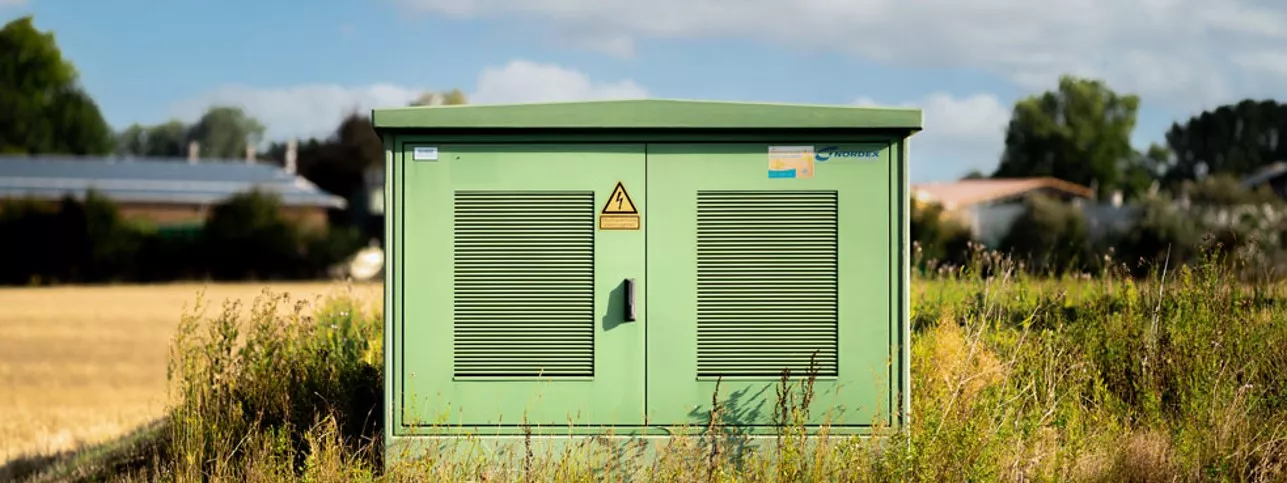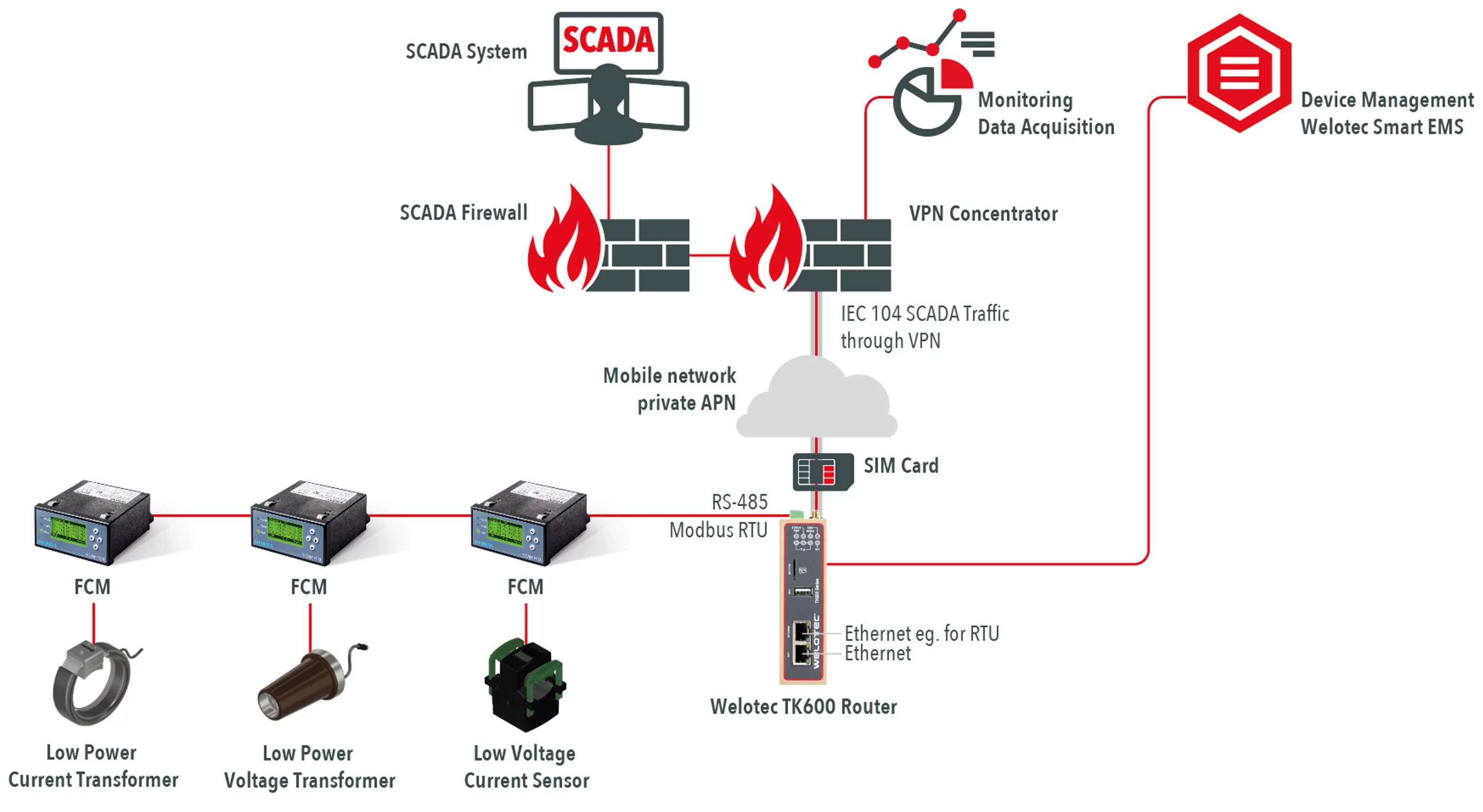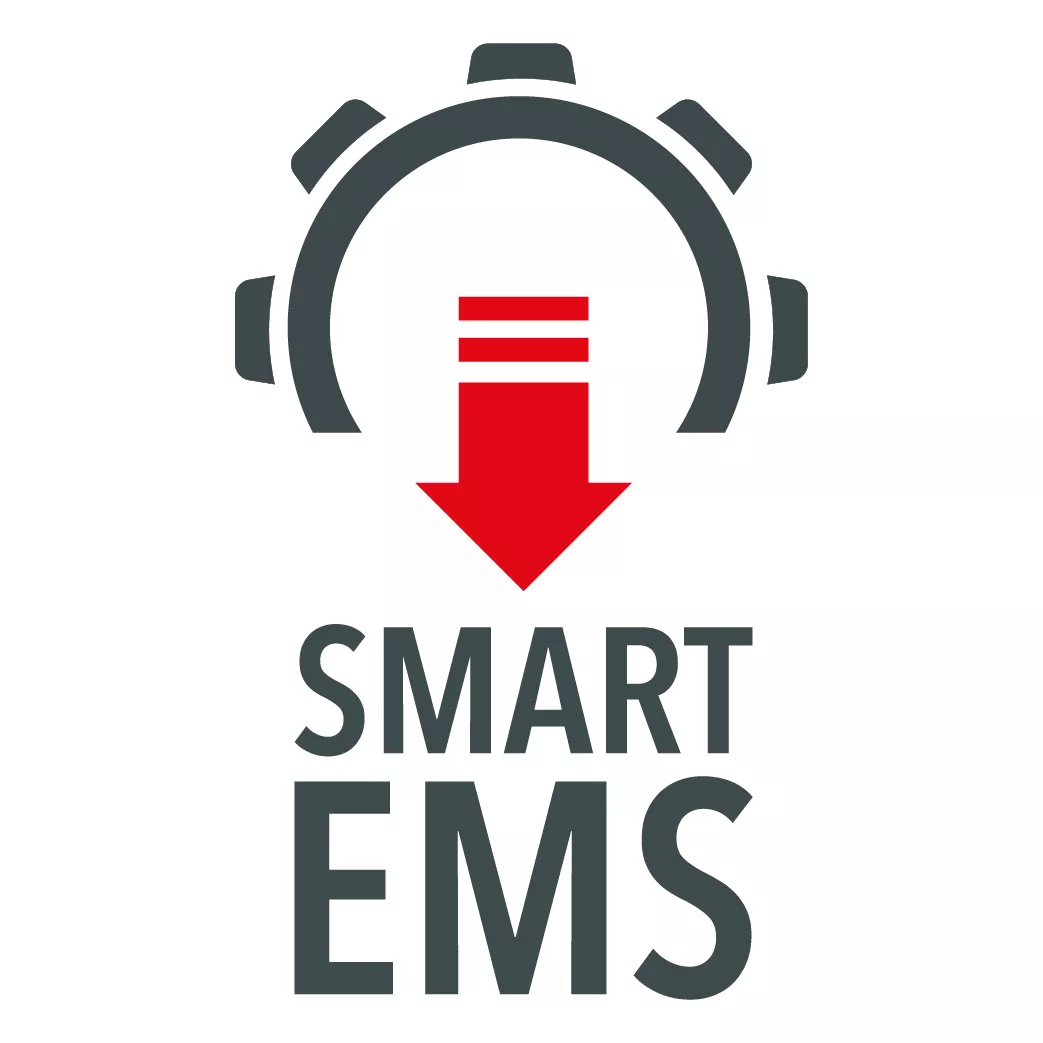Modbus RTU to IEC 60870-5-104 or MQTT via 4G LTE
Distribution Grid Operators (DSOs) must implement changes in their low-voltage and medium-voltage grids. These changes are possible due to the integration of distributed energy resources and electromobility. Capacity expansion is possible by investing in grid expansion. But other affects like load fluctuations and alternating direction of power flow need investments in smart and digital solutions.
This is the reason why the distribution substations and ring main units within the distribution grid need to become smart. Low power current and voltage transformers need to be installed in the medium-voltage switchgear and on the low-voltage side to get data out of the assets. Those sensors are usually connected via analogue connection to a fault indicator. This transformer substation monitoring is already implemented to reach faster fault localization which increase the availability. Still the downtime is in the range of hours due to travel time and identification of the fault in the ring on side.
Medium and low voltage side
In the medium voltage side the usage of intelligent short-circuit indicators and sensors is common. Medium-voltage switchgear become data suppliers to make the condition of the distribution grid transparent at any time.
In the low voltage side power monitoring plays an important role. It provides more transparency across all energy data for monitoring and control.
Therefore, smarter solutions with remote connectivity and control are required. However, these solutions still need to be cost-effective. In many cases only simple but reliable fault indicators with a basic RS-485 interface and Modbus RTU are installed or will be installed to save costs.
With an IoT connection it is possible to digitize the system and integrate the data via IEC 60870-5-104 to a SCADA system. An other option is to integrate all the data in a cloud system for analysis of assets, power quality problems, grid anomalies, and outages.
Connection of the sensors
To connect the sensor data from the fault indicator or meter, you need to read out the data via Modbus RTU or TCP and convert it into a Northbound protocol. For SCADA systems usually IEC 60870-5-104 is used. For Cloud based systems like the Azure IoT Hub or AWS IoT MQTT is the main requirement.
Welotec Industrial Router with IEC 60870-5-104
The TK602L Industrial 4G LTE Router can collect the sensor data from the fault indicator and convert it to the different protocols. So it is possible to connect with a central SCADA over IEC 104. Furthermore the data can be sent to a Cloud system via MQTT at the same time. The very compact size and DIN-Rail mounting allows it to install the TK602L easily in a compact substation.
Welotec VPN Security Suite
For operation at scale the TK602L is very useful in combination with the SmartEMS Management and Rollout tool for hassle-free operation. With the VPN Security Suite it can create secure distributed and fully automated VPN network within your distribution grid.
You can find more information about this solution in the recording of our joint online event with Greenwood Power.




